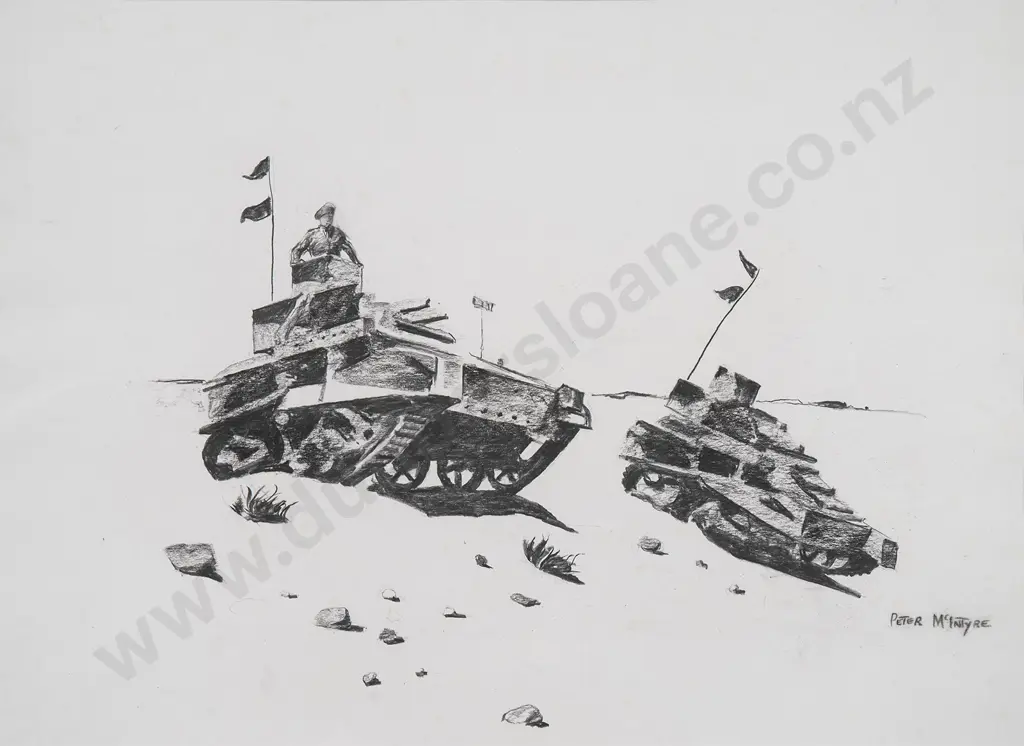NZ & International Fine Art - Evening Sale Wednesday, 4 May 2022 / 6:00 pm start
Peter McIntyre (1910-95) - Divisional Cavalry on patrol near Sidi Rezegh
Lot Details
13 March 1942, Peter McIntyre (1910-95) Divisional Cavalry on patrol near Sidi Rezegh, 13 March 1942 graphite on paper signed 'PETER MCINTYRE' (lower right) 47 x 64cm LITERATURE Peter McIntyre: War Artist (Reed, Auckland 1981) p. 37 as 'Honey tanks of the New Zealand Divisional Cavalry in the early days of the campaign in the Western Desert' Note this is a draft cover illustration for this publication REFERENCE A watercolour of this work is in the collection of the New Zealand War Archive (NCWA 342) Peter McIntyre is consistently one of New Zealand’s most popular landscape artists. Initially studying journalism at Otago University, McIntyre abandoned this field of study to pursue art, taking up a position at the Slade School of Fine Art in London. He was still in London, working as a commercial artist, at the outbreak of the Second World War in 1939. He quickly enlisted as a gunner in the 34th Anti-tank Battery with the 2nd New Zealand Expeditionary Force (NZEF). McIntyre continued his drawing practice while serving with the NZEF, contributing artworks for military magazines and making portraits of fellow soldiers. McIntyre’s skills were soon utilised by the military’s Draughting Office, where he prepared maps and drawings of Italian defence positions based on arial photographs. While in this role his art was noticed by Major General Fryberg, who appointed him New Zealand’s official war artist. McIntyre’s work made regular appearances in magazines such as the New Zealand Listener, illustrating the activities of the NZEF throughout Europe and North Africa. Ninety years on, McIntyre’s paintings serve as more than just a historical record of the war – they are an insightful commentary on personal relationships, comradery, fear, anticipation and tragedy. Like Picasso’s Guernica, these works reveal the personal experience behind this historical trauma, and are essential to the understanding and commemoration of the Second World War.


